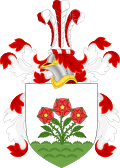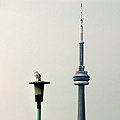This article may need to be rewritten to comply with Wikipedia's quality standards, as almost the whole article is unsourced and unlikely to be sourced; some new sources are listed in the Further reading section.(March 2018) |
This article includes a list of references, related reading, or external links, but its sources remain unclear because it lacks inline citations .(September 2014) |

A visual pun is a pun involving an image or images (in addition to or instead of language), often based on a rebus.
Contents
Visual puns in which the image is at odds with the inscription are common in cartoons such as Lost Consonants or The Far Side as well as in Dutch gable stones. For instance, a gable stone in the village of Batenburg puns on the words baten (‘to profit’) and burg (‘castle’) by depicting silver coins becoming gold in a castle.
European heraldry contains the technique of canting arms, which can be considered punning.






